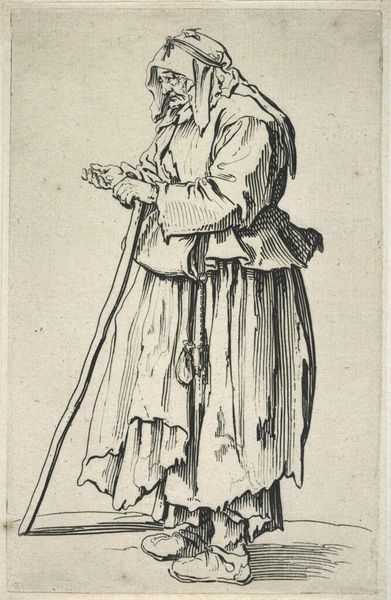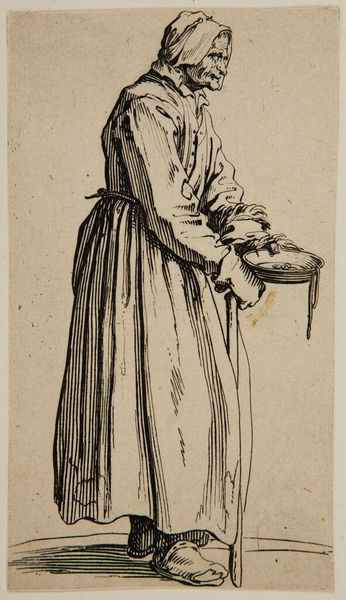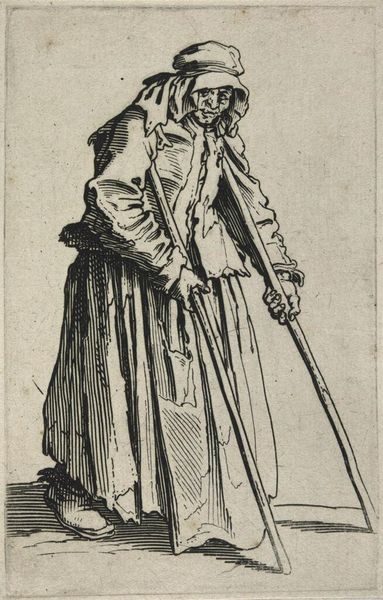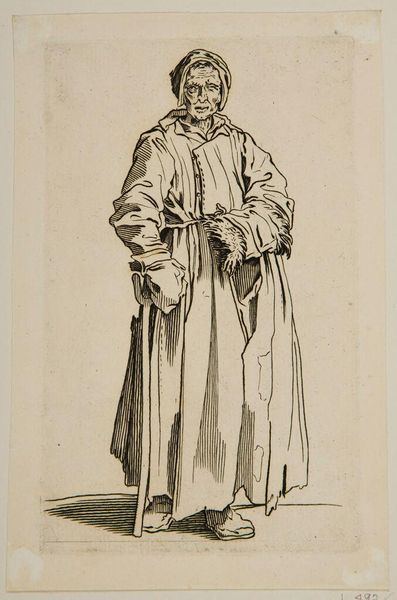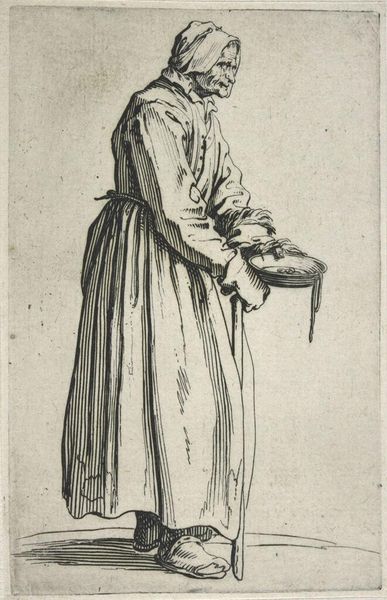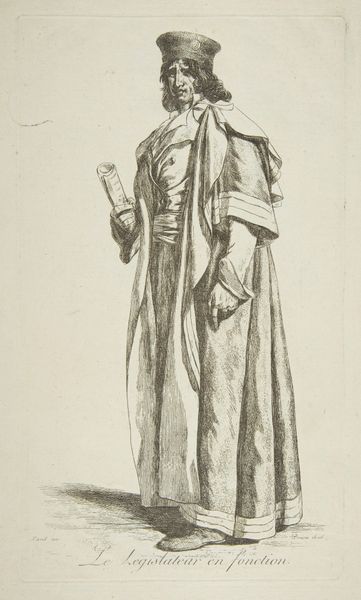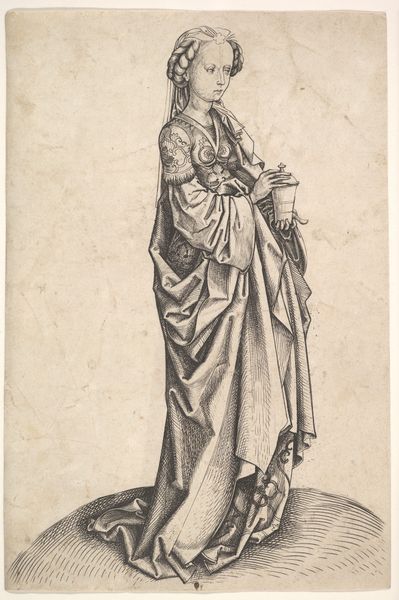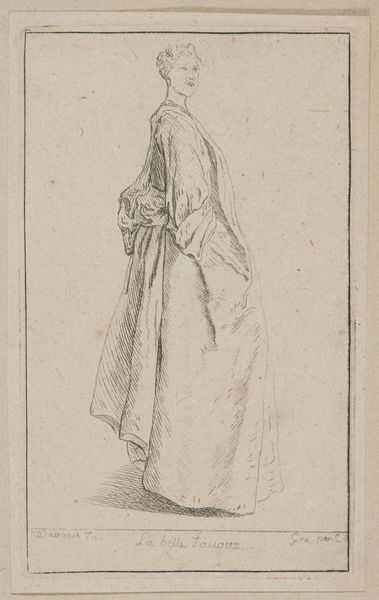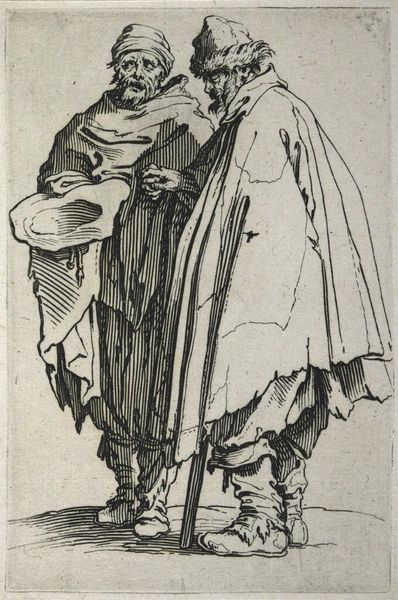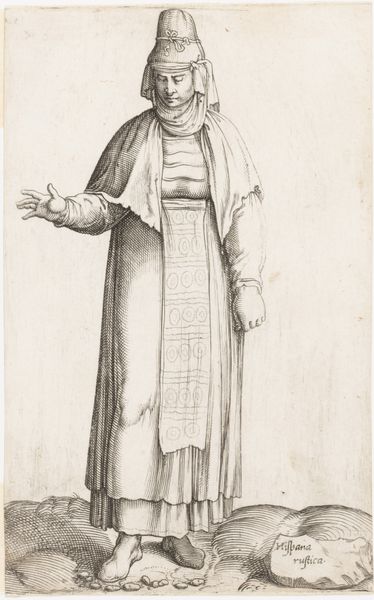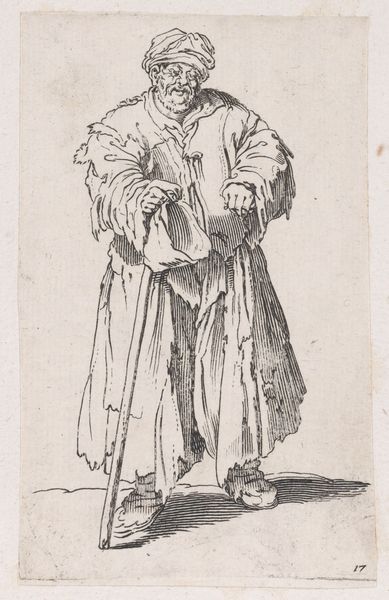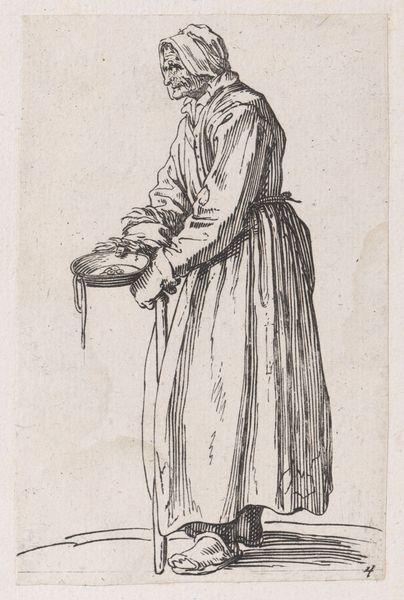
Copyright: CC0 1.0
Editor: This is Jacques Callot’s "One-Eyed Beggar Woman." It's a striking image. What's particularly compelling is the stark representation of poverty. How do you interpret this work within its historical context? Curator: Callot’s etching isn't just a portrait; it's a commentary on the social and economic inequalities of 17th-century Europe. Consider the systems that marginalized women, the disabled, and the poor, reducing them to the fringes of society. Do you think Callot’s work challenges or reinforces those systems? Editor: It's a difficult question. Perhaps the realism, however unflinching, fosters empathy. Curator: Precisely. By depicting her with such detail, Callot forces us to confront uncomfortable truths about power, privilege, and the human cost of inequality. It’s a reminder that art can be a powerful tool for social change. Editor: That’s given me a lot to think about, seeing the work as a form of historical activism. Curator: Indeed. It invites us to reflect on the historical roots and continued prevalence of social injustice.
Comments
No comments
Be the first to comment and join the conversation on the ultimate creative platform.

